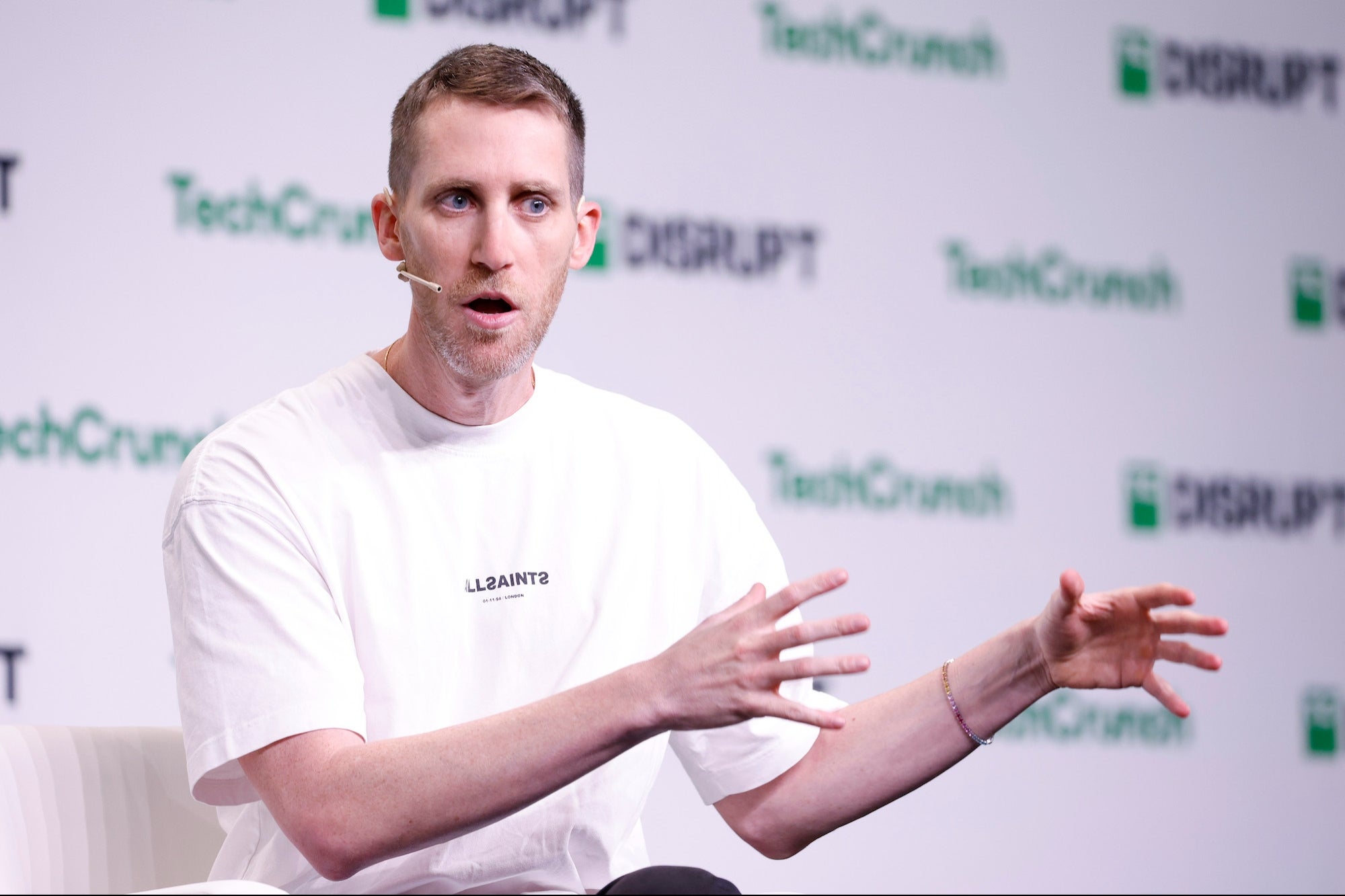How to Pull Off a Guerrilla Marketing Campaign It requires creativity, flexibility and a willingness to take a little risk
Guerrilla marketing was made for small business owners. It requires creativity, flexibility and a willingness to take a little risk. The one thing it doesn't take is a big budget.
"Guerrilla programs usually start when a client says to us, 'we don't have any money but we'd really like to get some media attention,'" Drew Neisser, CEO of Renegade Marketing, tells us.
They can also be an awesome way to get you noticed, set you apart from your competition and earn you a reputation for being fun and different--all tailored to whatever budget you have available.
We consulted a few guerrilla marketing agencies to get some tips on executing a successful guerrilla strategy.
What is guerrilla marketing?
While difficult to define exactly, guerrilla marketing is any promotion that's unconventional, unexpected and usually evocative of a unique, memorable reaction from or interaction with the viewer.
Our sources used other descriptive words to explain the essence of guerrilla marketing:
Brett Zaccardi of Street Attack, describes it as anything "unauthorized and disruptive" and "sticky."
Adam Salacuse, Founder and President of ALT TERRAIN emphasizes the undergound element of guerrilla marketing when he says it's "brand activation that isn't 100 percent permitted by the city, event or establishment."
"Guerrilla marketing is a state of mind," Neisser sums up nicely. "It simply isn't guerrilla if it isn't newsworthy."
Guerrilla marketing is NOT traditional media.
All of our sources were emphatic about what guerrilla marketing is not: anything resembling traditional media, like print or TV advertising.
Jay Conrad Levinson, the man who coined the term and literally wrote the book on guerrilla marketing, lists the most important ways guerrilla marketing is different from traditional marketing on his website. A few of the most compelling:
- "Instead of investing money in the marketing process, you invest time, energy and imagination."
- "Instead of ignoring customers once they've purchased, you have a fervent devotion to customer follow-up."
- "Instead of believing that single marketing weapons such as advertising work, guerrillas know that only marketing combinations work."
A guerrilla program is probably not right for your business if you can't take a risk.
While guerrilla marketing is great for small businesses, there are certain industries and clientele for which a guerrilla campaign might not be appropriate.
Neisser suggests that "highly regulated industries like financial services and insurance . . . make considering guerrilla approaches a risky proposition."
And you should consider the fact that a guerrilla campaign, by nature, "could ruffle the feathers of cities and some consumers," Salacuse adds.
If that thought worries you, guerrilla marketing might not be a good fit for your business.
A guerrilla marketing campaign can be tailored to almost any small business.
With that being said, there's a way for basically any business or brand to do some form of guerrilla marketing, "it's just a question of risk tolerance . . . [since it] requires a brand to step outside its comfort zone and do something they've never done before," Neisser explains.
Zaccardi reiterates that there can be "a fit for about any brand--guerrilla marketing can even occur in an online setting, which is a much safer/familiar medium for some brands."
But if edgy is your thing, a guerrilla campaign is right up your alley. Salacuse says that "guerrilla marketing is often the only way to implement a desired concept," and that today's consumers often "tend to gravitate toward brands that implement original and edgy campaigns."
Get started
Zaccardi suggests that every small business ask themselves, "What's their essence--what's the core message that can be distilled into a 5-second exchange or in a clever installation?"
Neisser suggests starting "by setting clear objectives followed quickly by doing your homework, really thinking through your category, brand and consumer." You have to have a goal in mind and you also need to understand who your customer is and what would intrigue and appeal to them.
"Then its time to think 360 degrees, imagining all the ways your idea can come to life," Neisser continues. "It often helps at this point to imagine the story headline you'd like to see, the tweets you'd like to read, the photos you'd like to be taken and YouTube videos that you'd want to view."
Remember, your ultimate goal is to get media attention and make a positive connection with your consumers. How can you make that happen?
Our sources emphasize the importance of researching to make sure your idea hasn't been done before, and Neisser suggests briefly consulting a PR person that you trust to get their feedback.
Tips for pulling it off
Neisser says the first step to planning a great guerrilla campaign is your state of mind: "Try not to think of guerrilla as a moment in time or as a simple street stunt. This will limit your horizons and the potential impact."
"Find the authentic voice and shell for the campaign and rally around it. If you have to 'sell' me on something chances are I've already lost interest," suggests Zaccardi.
And you won't be able to tell if your campaign worked unless you inspire the customer to take the next step. "Will it make a consumer stop and think, laugh, remember?" Zaccardi adds. "Is there a call to action--some trackable ability to gauge results?"
Two famous examples of guerrilla marketing done right:
- The Blair Witch Project
One of the most successful guerrilla marketing campaigns ever arose out of a few film students with a minimal budget and a camera.
The documentary-style thriller probably would have ended up a laughable B-movie had the creators not concocted their innovative marketing strategy. By setting up an internet campaign devoted to spreading rumors about the fictitious legend of "the Blair Witch", the film's creators created buzz out of thin air.
The movie grossed $250 million globally, according to CNN--all after being made and promoted on a budget of $50,000. - Medecins du Monde's temporary homeless shelters
When Medecins du Monde wanted to call attention to Paris' homelessness problem, they didn't do it with billboards or ads full of statistics.
Instead, they distributed simple-to-set-up tents to homeless people all around the city.
According to CNN, the effect of seeing the sheer number of tents popping up around Paris was enough to get the government to immediately allocate millions to emergency shelters for the homeless.
A few things you should never, ever do:
These missteps will defeat the purpose of your guerrilla campaign.
- "Never aim to upset, scare or provoke people in a negative way. The goal should be to implement something that people will embrace, enjoy and share with friends," Salacuse says.
- "Don't be contrived or too bland. Don't try to be something you're not," advises Zaccardi.
- Try not to annoy your target," says Neisser. And, he adds,"[it] is generally not a good idea to do something that will cause someone on the team to go to jail."
Two famous examples of guerrilla marketing stunts gone wrong:
- Vodafone's streaker
In 2002, Vodafone caused quite a stir when it hired two men to streak across the field during a major Australian rugby match--wearing nothing but the Vodafone logo painted across their backs.
CNN explains the added rub: the match was being played in a stadium sponsored by Vodafone's main competitor, Telestra.
This one backfired somewhat. The streakers were fined and many fans were upset by the disruption (which potentially caused a game-winning kick to be missed).
The stunt did succeed in getting tons of worldwide press, and it earned Vodafone a reputation for pushing the envelope. But most of the sentiments about it were negative--not exactly what you want to do with your campaign. - Turner Network's bomb scare
We covered this one in our "15 Biggest PR Disasters Of The Decade." Cartoon Network thought it would be a great idea to place light-up figures featuring the characters from its show "Aqua Teen Hunger Force" around Boston.
Unfortunately, confused local residents mistook them for explosives. The Boston police were inundated with terrified calls from people fearing the city was under attack by terrorists, SWAT teams were deployed and the head of the company ended up resigning because of all the outrage.
When it comes down to it, guerrilla marketing can really mean anything, as long as it's unexpected, non-traditional and memorable. As Neisser says, "guerrilla marketing done right is newsworthy."
If your strategy embodies the spirit of your brand and your customers, it's a winner. And, please--make sure nobody ends up in jail.










